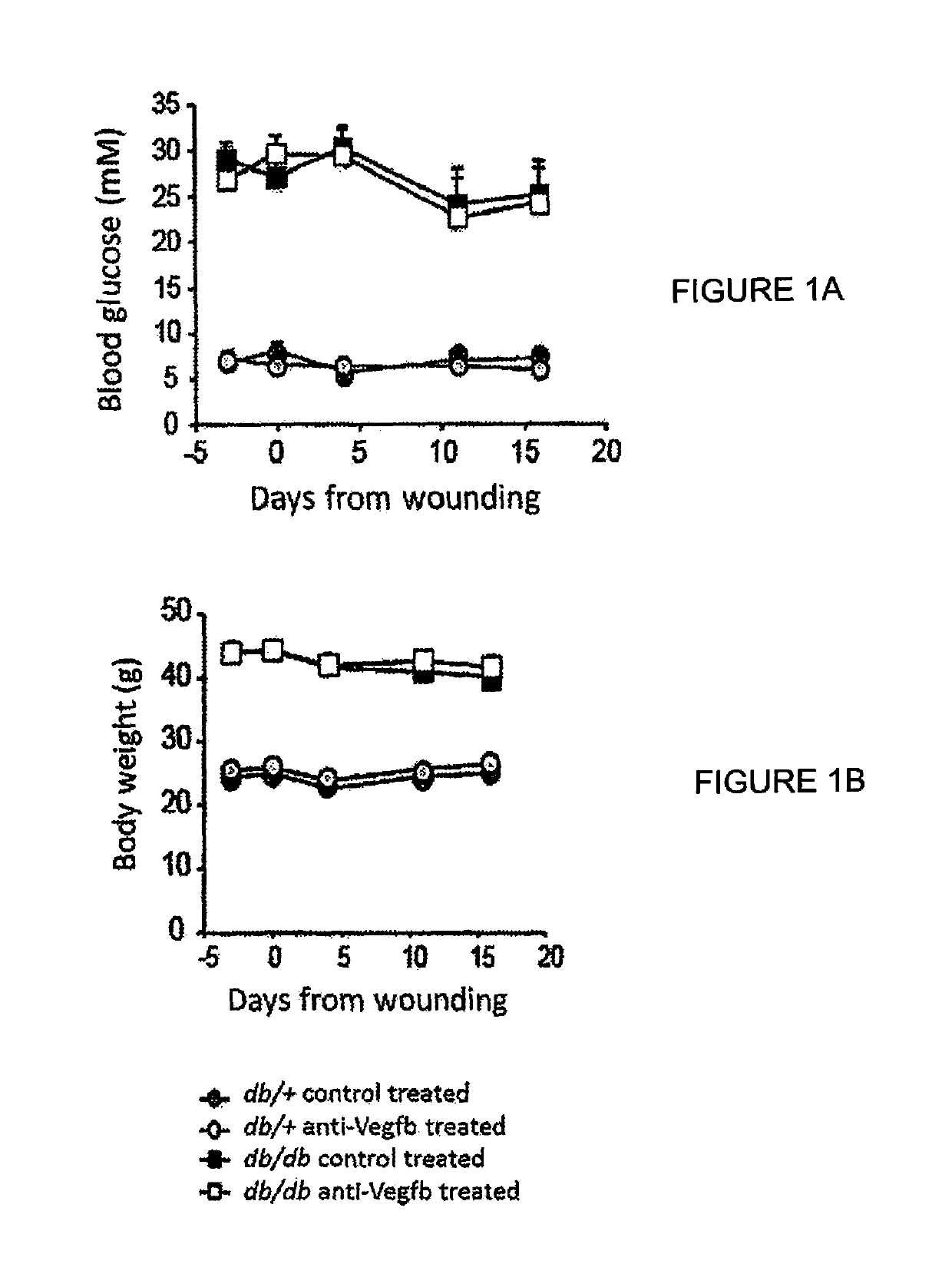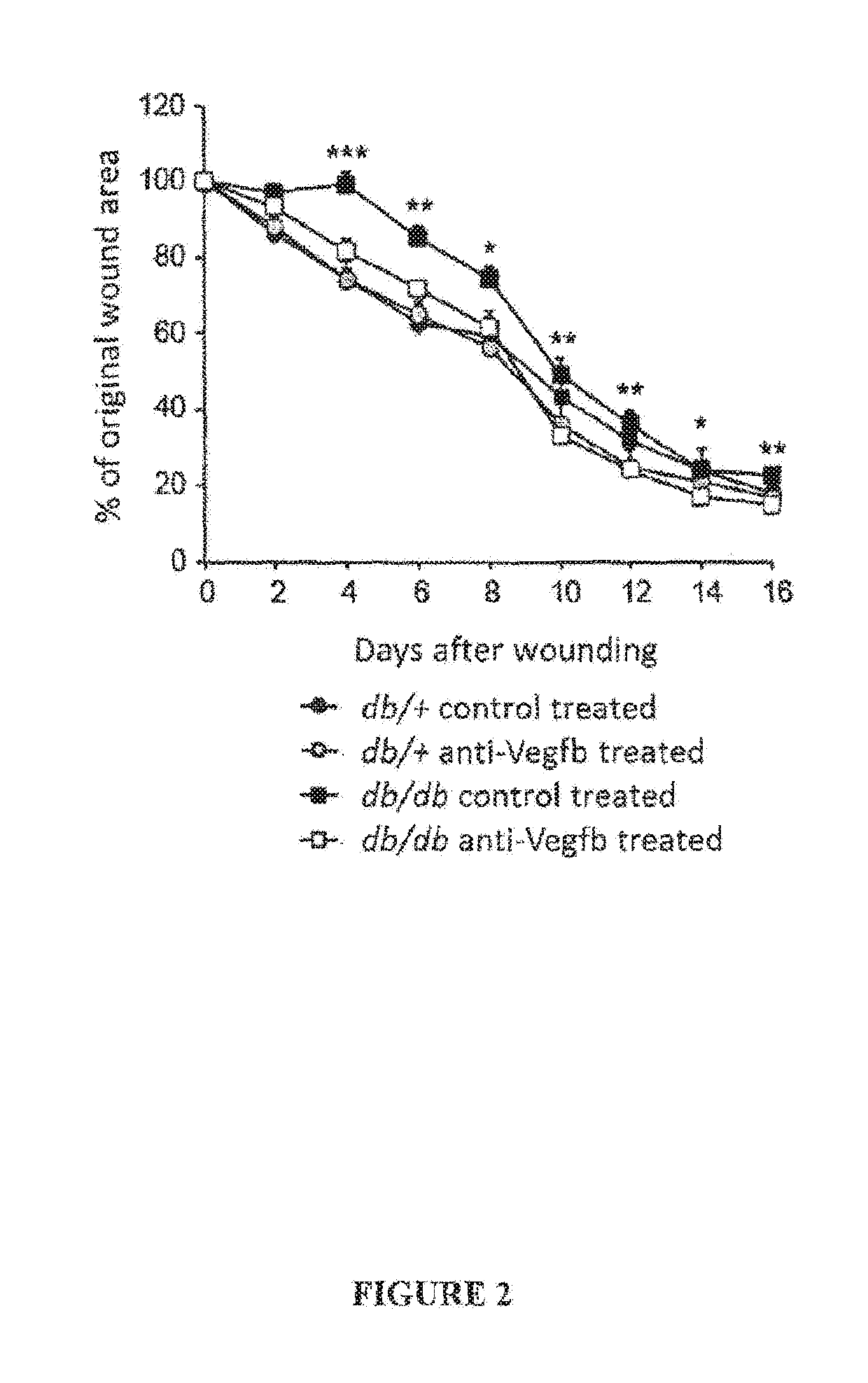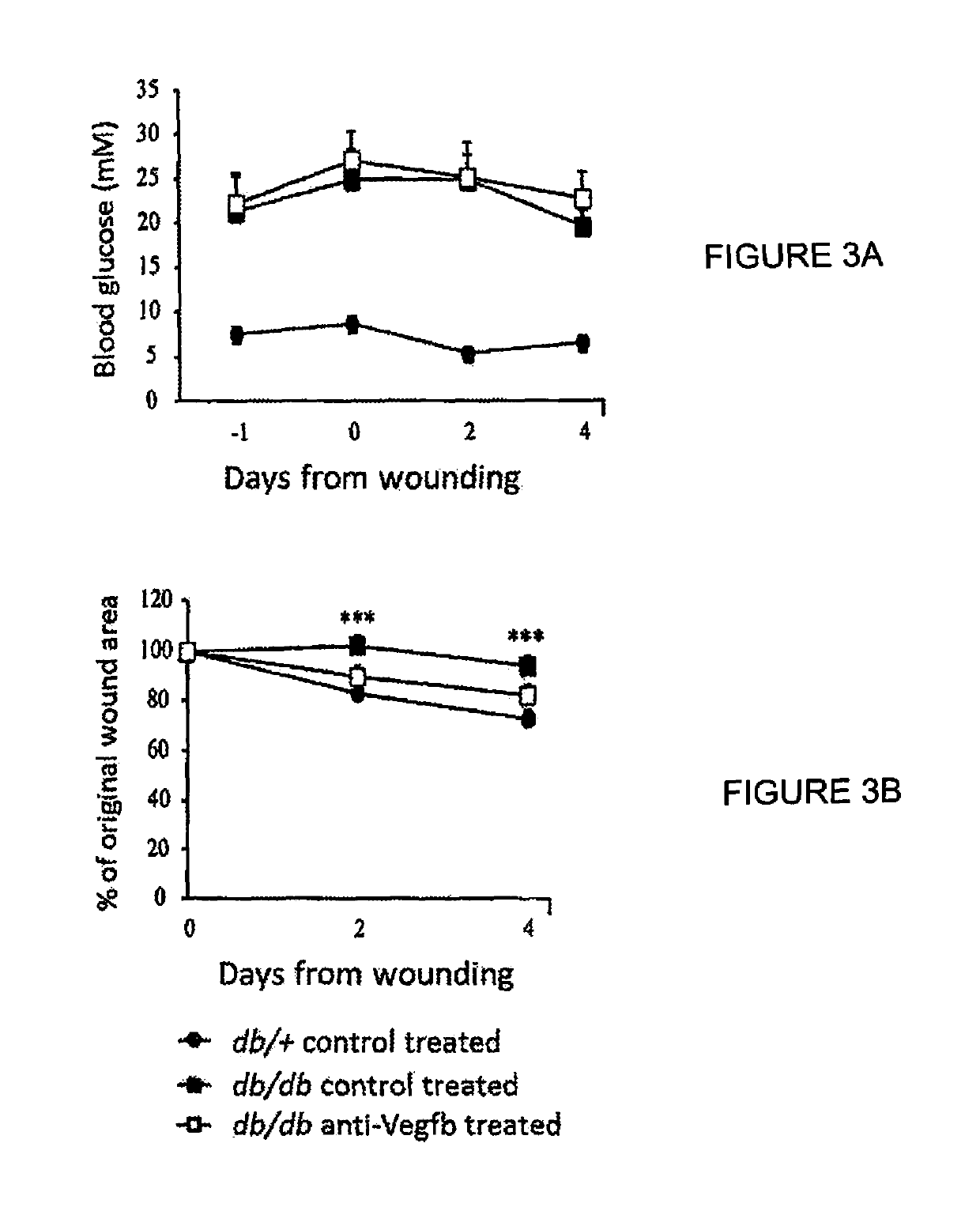Methods of treating wounds in a diabetic subject
a diabetic subject and wound technology, applied in the field of diabetic subject wound treatment, can solve the problems of imbalance in the synthesis and degradation of extracellular matrix proteins, complicated or interfere with normal adequate wound healing, and catastrophic open refractory wounds, etc., to achieve more rapid wound closure and healing, and improve wound healing
- Summary
- Abstract
- Description
- Claims
- Application Information
AI Technical Summary
Benefits of technology
Problems solved by technology
Method used
Image
Examples
example 1
izing Anti-VEGF-B Antibody Treats Wounds in Diabetic Mice
Antibody-Mediated Inhibition of VEGF-B Moderately Influences Blood Glucose Levels in Diabetic db / db / / BKS Mice
[0354]In-house bred male C57BKS / Leprdb (db / db / BKS) mice were purchased from Jackson Laboratory. Mice were housed in one-mouse per cage prior wounding and during the experiment. The animal facility has a 12-hour dark / light cycle with food and water available ad libitum. Enrichment included rat tunnels and nesting material to reduce stress. db / db / BKS male mice (8 weeks) were pre-treated 2 times / week (i.p.) for 4 weeks prior to wounding, with 400 μg VEGF-B-antibody (2H10) or an isotype matched control antibody (BM4). The same treatment regime continued after wounding until sacrificing the animals. Body weight and blood glucose were monitored prior to and during the experiment. Blood glucose levels were analyzed from the tail using a blood glucose meter (Countour stick, Bayer) and weight was measured with a laboratory scale...
PUM
| Property | Measurement | Unit |
|---|---|---|
| thickness | aaaaa | aaaaa |
| thick | aaaaa | aaaaa |
| time | aaaaa | aaaaa |
Abstract
Description
Claims
Application Information
 Login to View More
Login to View More - R&D
- Intellectual Property
- Life Sciences
- Materials
- Tech Scout
- Unparalleled Data Quality
- Higher Quality Content
- 60% Fewer Hallucinations
Browse by: Latest US Patents, China's latest patents, Technical Efficacy Thesaurus, Application Domain, Technology Topic, Popular Technical Reports.
© 2025 PatSnap. All rights reserved.Legal|Privacy policy|Modern Slavery Act Transparency Statement|Sitemap|About US| Contact US: help@patsnap.com



